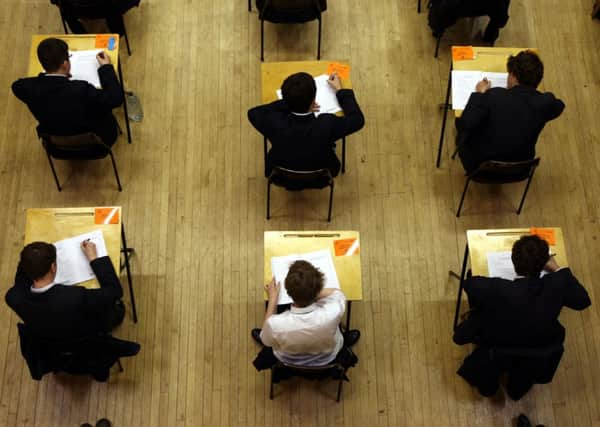So how useful are school league tables this year?


All state schools in the area are performing above the national average of 56.6 per cent for the Government’s benchmark measure of five good GCSEs, including English and maths.
But the Government is facing criticism that the league tables are a “nonsense” after steps to make exams more difficult led to more ‘failing schools’ across Britain.
Advertisement
Hide AdAdvertisement
Hide AdThe changes include tougher exams, banned re-sits and some vocational and academic qualifications being stripped from the tables.
Brian Lightman, general secretary of the Association of School and College Leaders (ASCL), said “quite a few schools have fallen foul” of the various changes to league tables “by continuing with exams that don’t count”.
He added: “In spite of this, the children themselves have received a good set of qualifications,”
“This calls into question the validity of the performance tables.”
Advertisement
Hide AdAdvertisement
Hide AdBoth private and state school heads now say the changes have made the league tables nonsensical and irrelevant.
Renowned private schools have ended up at the bottom of the GCSE tables, despite dominating the top of the A-level tables and sending many pupils to some of the best universities. Schools like Eton, Harrow, Winchester and St Paul’s - and King’s High, Warwick and Princethorpe College have not registered a percentage on this year’s tables.
This is due to the fact that, in some independent schools, pupils have been studying versions of qualifications, such as International GCSEs, which have ceased to be recognised in the tables.
These qualifications are also studied in many state schools, which have also been affected by the changes.
Advertisement
Hide AdAdvertisement
Hide AdRichard Harman, chairman of the Headmasters’ and Headmistresses’ Conference (HMC), which represents many leading independent schools, said the decision to drop IGCSEs made a “nonsense” of the tables.
He said: “Several of the UK’s most highly performing independent schools and others offering this excellent qualification will now appear to be bottom of the class in the Government’s rankings,”
“This obviously absurd situation creates further confusion for parents as they cannot compare schools’ performance accurately and transparently.
“Many HMC schools will continue to offer the IGCSE, as experience tells us it is rigorous and offers a good basis for sixth-form study.”
Advertisement
Hide AdAdvertisement
Hide AdThe number of schools failing to meet Government benchmarks on GCSE grades and progress has doubled to 330 schools in the wake of the changes.
But Education Secretary Nicky Morgan insists the tables are still useful.
She said: “For too long pupils were offered courses of no value to them and schools felt pressured to enter young people for exams before they were ready.
“By stripping out thousands of poor quality qualifications and removing re-sits from tables, some schools have seen changes in their standings.
Advertisement
Hide AdAdvertisement
Hide Ad“But fundamentally, young people’s achievement matters more than being able to trumpet ever higher grades.”
* For the Government’s benchmark measure of five good GCSEs (A* to C), including English and maths, all state secondary schools in our area were above the national average of 56.6 per cent of pupils in 2014.
At Aylesford, 59 per cent of pupils, achieved the benchmark and at Campion it was 58 per cent.
At Kenilworth School, 80 per cent of pupils made the grade, while Kineton had a 66 per cent rate.
Advertisement
Hide AdAdvertisement
Hide AdMyton School, whose headteacher Paul MacIntyre has previously spoken out against the publication of “unverified whole cohort results” for GCSEs and A-levels, had a 73 per cent rate, while North Leamington School had 61.
Southam College had a 76 per cent rate of pupils who achieved the benchmark, while Trinity Catholic School had a score of 61 per cent.
Of the private schools in the district, Arnold Lodge had a score of 59 per cent, while The Kingsley School had a 93 per cent rate.
To view the tables online visit www.education.gov.uk and search for Warwickshire under ‘school and college performance tables’.